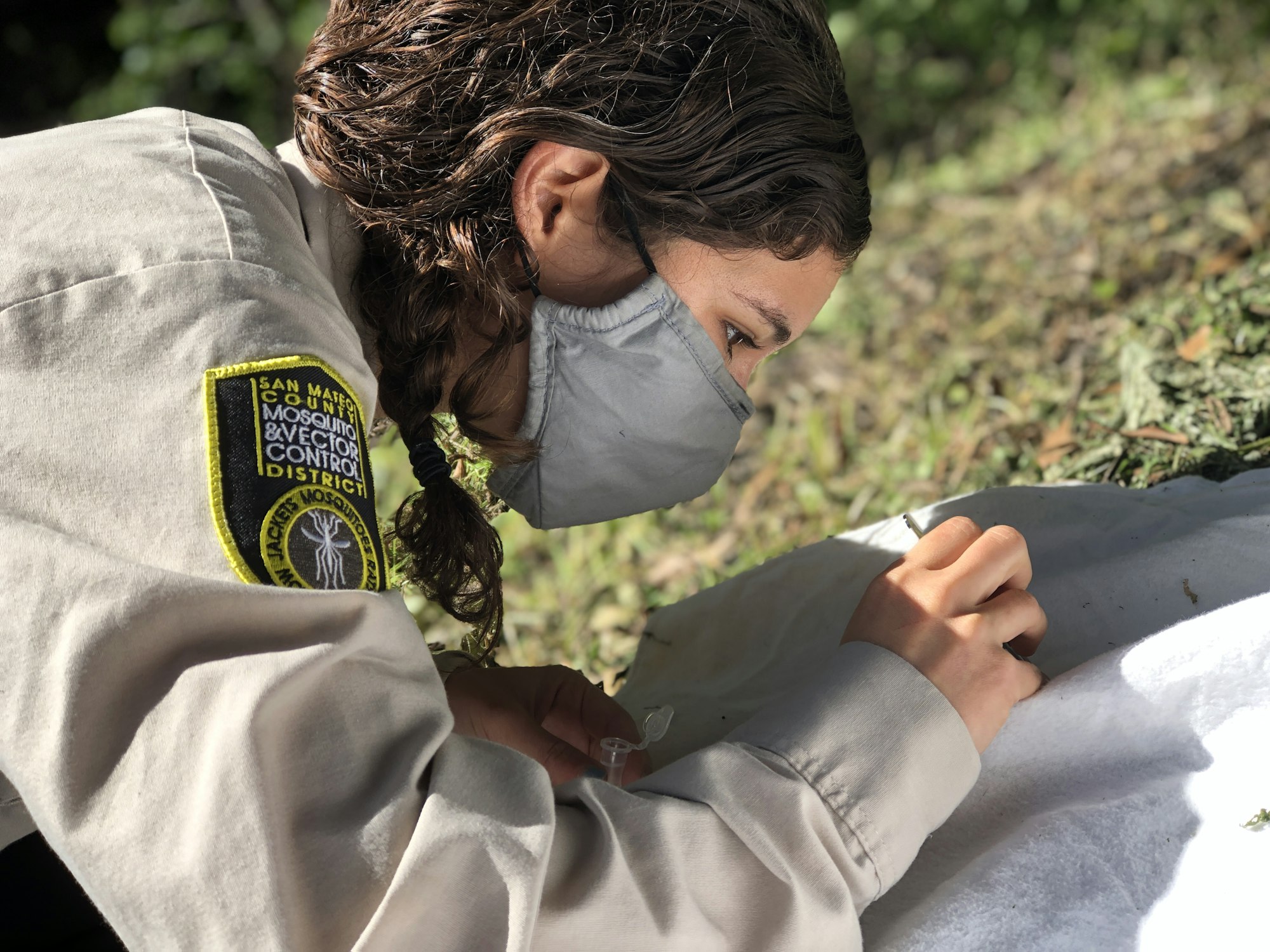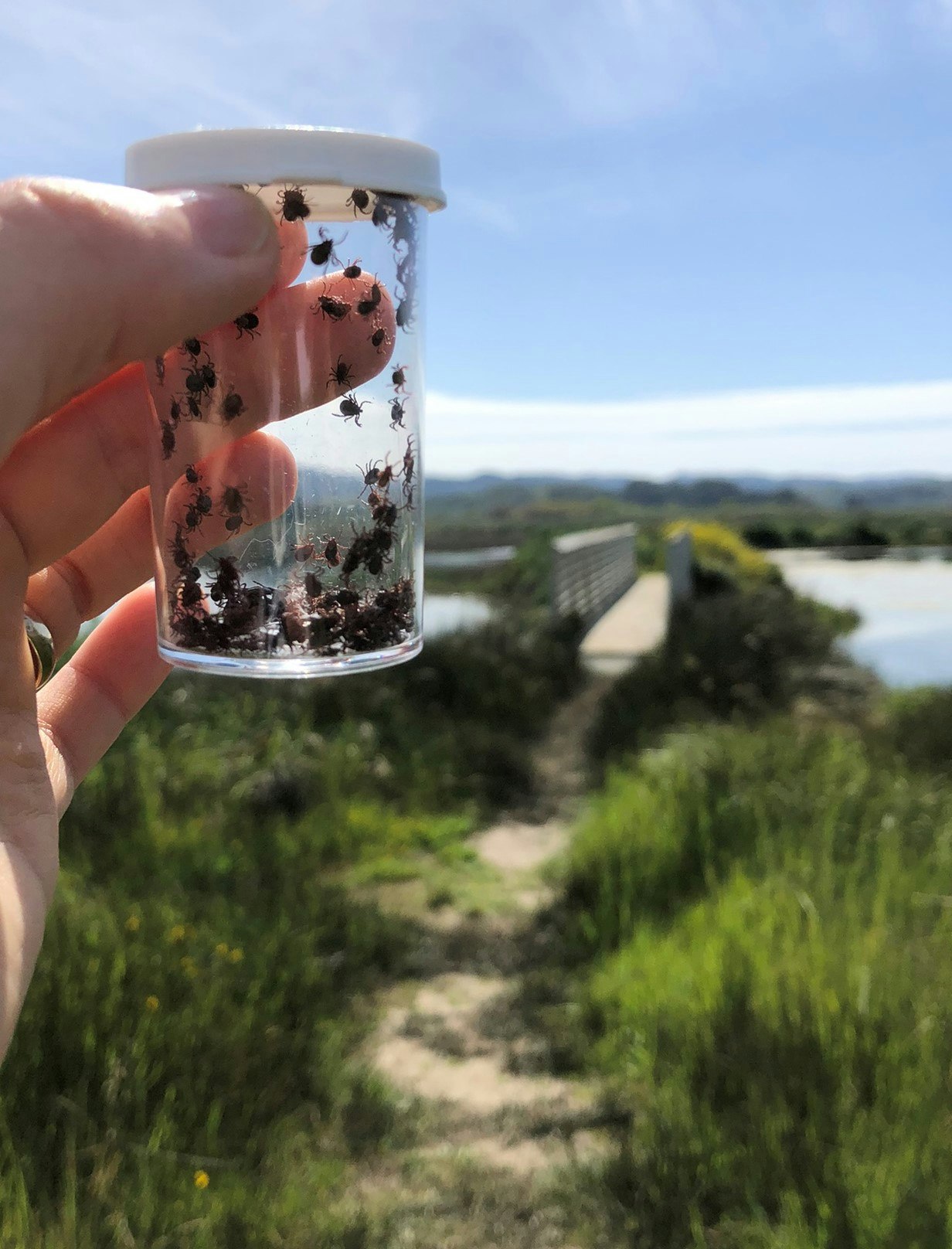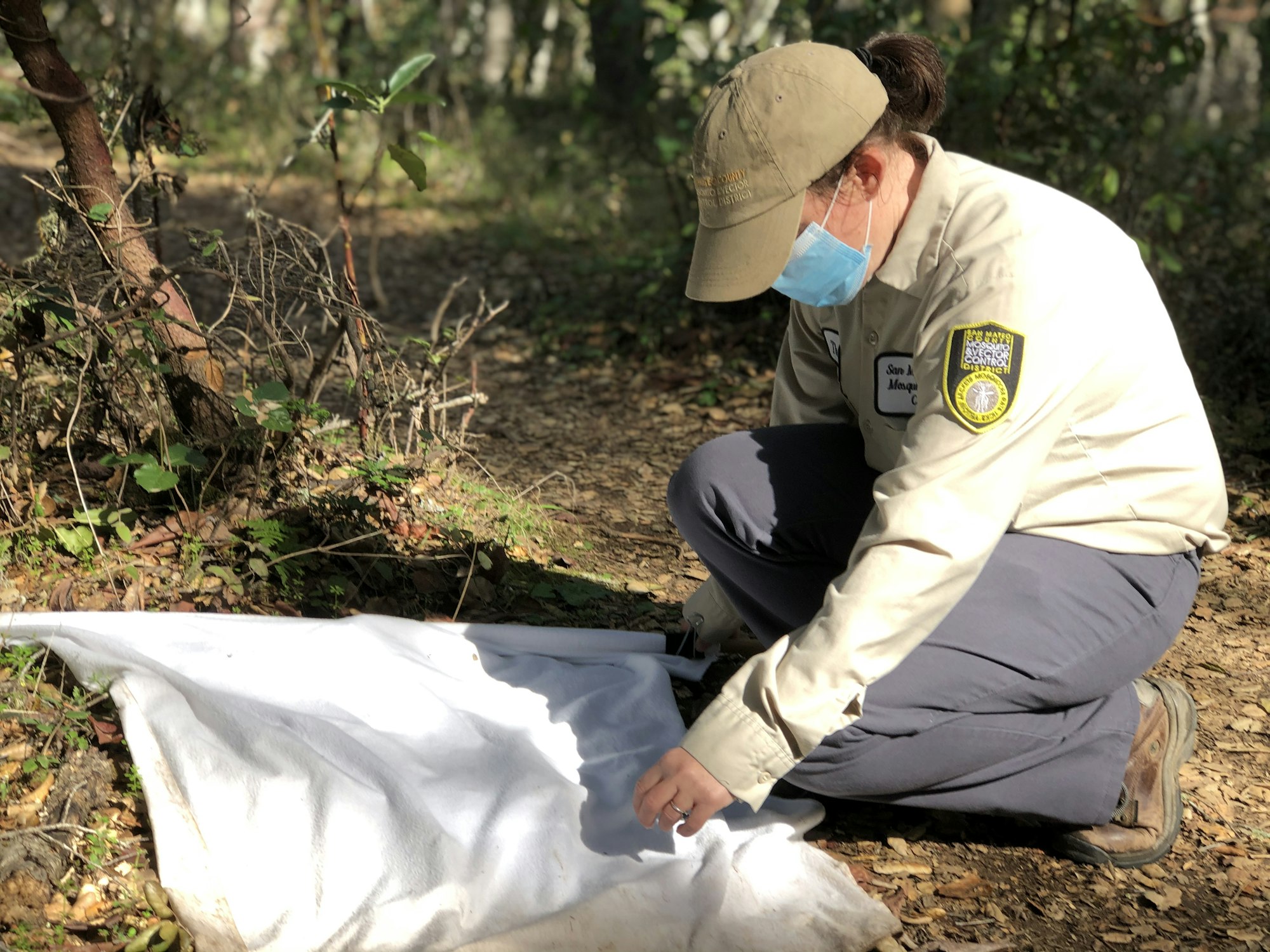Tick Collection and Testing










Our laboratory does not test ticks that have bitten people, but we can help identify ticks you've found on you or your pet. Learn more HERE.
To understand tick-borne disease risk across the County, District staff collect ticks at local parks each year from December through June, as ticks collected during these months are most likely to bite humans. Staff use white cloths to drag along trail edges or through forest understories to collect questing ticks – ticks that are actively seeking hosts for blood meals. Ticks are picked off the cloths and returned to the laboratory where they are identified to species and tested for pathogens.
Real-time PCR is used to test western black-legged ticks (Ixodes pacificus) for three tick-borne pathogens found in California. Associated tick-borne diseases are Lyme disease (specifically the Borrelia burgdorferi sensu lato complex which includes B. burgdorferi sensu stricto, the agent of Lyme disease), hard-tick relapsing fever (caused by Borrelia miyamotoi), and human granulocytic anaplasmosis (HGA) (caused by Anaplasma phagocytophilum). All three diseases may be vectored by both nymphal and adult ticks.
Adult ticks are tested in groups, or “pools,” of a maximum of five individuals. The results are reported as a minimum infection prevalence, or MIP. This is the standard way of expressing the proportion of vectors tested that are infected with a particular pathogen and assumes that only one tick in a given pool is infected. As prevalence values are highly dependent on the number of ticks collected, we sample 150 or more adult ticks per park, which increases the chance that our sample will represent the true prevalence. Learn more about our findings HERE.
Page last reviewed: April 11, 2025


